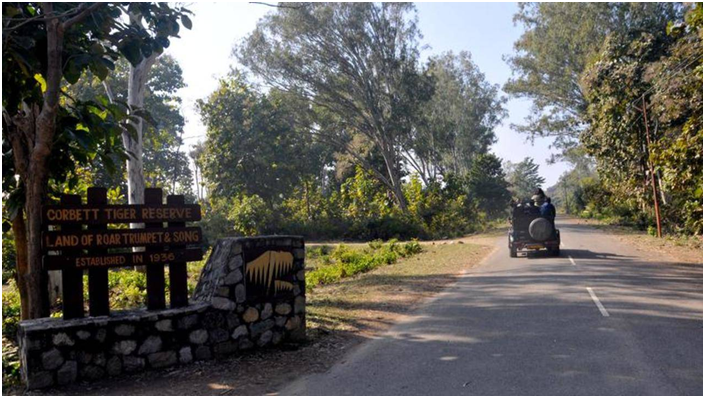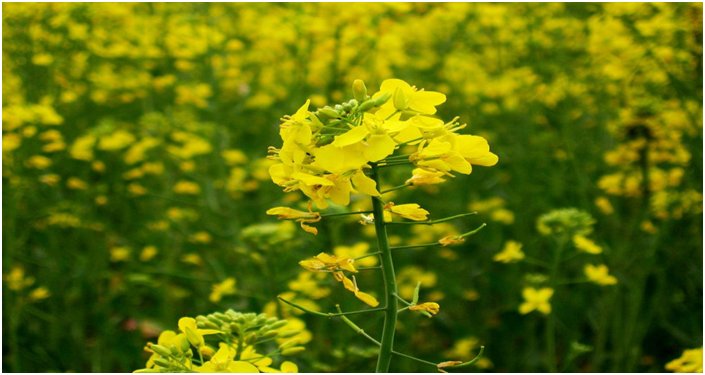IIT-Madras and NASA researchers study microbes on space station (GS Paper 3, Science and Tech)

Why in news?
- Recently, the Indian Institute of Technology-Madras and NASA Jet Propulsion Laboratory (JPL) researchers have studied the interactions between microbes in the International Space Station (ISS).
- It found that a microbe that resides on the ISS, was found to be beneficial to various other microorganisms but hampered the growth of a fungus.
Dominance of Klebsiella pneumonia:
- The present study was inspired by the earlier observations of the dominance of Klebsiella pneumoniae, a bacteria.
- This pathogen has been known to cause pneumonia and other nosocomial (hospital-acquired) infections.
- The researchers were broadly interested in understanding how this bacteria affects the growth of other microbes in the vicinity and the possible implications it could have.
Key findings:
- The researchers analysed the microbial sample data taken across three space flights at seven locations on the ISS.
- The study found that Klebsiella pneumoniae, a major microbe that resides on the ISS, is beneficial to various other microbes also present on the ISS, especially the bacteria from the Pantoea genus.
- However, it was found that its presence was hampering the growth of Aspergillus fungus.
- This computational observation was further tested through laboratory experiments, and it was found that the presence of K. pneumoniae was indeed detrimental to the growth of the Aspergillus fungus.
Way Forward:
- The study would help devise strategies for the disinfection of space stations to minimise any potential impact of microbes on the health of astronauts.
- Therefore, studying the microbes inhabiting the space station becomes important to understand the risks associated with short-term and long-term space travel on the health of astronauts.
Central panel to probe ‘illegal’ felling of trees in Corbett National Park
(GS Paper 3, Environment)
Why in news?
- Recently, the National Green Tribunal (NGT) told the forest officials of Uttarakhand that it would direct the Union government to form a committee to initiate an investigation into “illegal tree cutting” in Jim Corbett National Park.

Background:
- The NGT’s move came after it had taken cognisance of The Hindu’s report on the felling of trees in the Corbett Tiger Reserve (CTR).
- The report had quoted a Forest Survey of India (FSI) report stating that over 6,000 trees were illegally cut to pave the way for the Pakhro tiger safari project at the tiger reserve.
Key findings of the report:
- The forest department of Uttarakhand had permission to cut only 163 trees for the safari project, but during preliminary investigation, it was found that 97 extra trees were illegally cut in the area.
- Taking cognisance of the complaint, the State government asked the FSI to conduct a survey of the number of trees felled in the designated area for the Pakhru tiger safari project inside the tiger reserve.
- The Forest Survey Institute(FSI)was also tasked with scanning the area for illegal felling and change in forest cover in the Kalagarh forest division.
- Over nine months, the FSI compiled a report on the tree cover in the Pakhro, Kalushaheed, Nalkhatta, and Kalagarh ranges in the forest area.
- The report observed that 6,093 trees had been illegally felled in the tiger reserve. According to the report, around 16.21 hectares of land in CTR had also been allegedly cleared by forest officials.
- The State forest department, however, refuted the FSI’s claims and said there were some technical issues that needed to be resolved before the report could be accepted.
Pakhro tiger safari project:
- Former State Forest Minister Harak Singh Rawat had laid the foundation stone for the Pakhro tiger safari project in December 2020.
- He said the project, spread over 106 hectares, would be the State’s first tiger safari and the world’s longest. He said “100% sighting” of tigers would be ensured at the safari.
Jim Corbett National Park:
- Spread across 500 sq, km, the reserve is home to 230 tigers and has the world’s highest tiger density — at 14 tigers per hundred sq. km.
Approval of GM mustard may threaten food security
(GS Paper 3, Food Security)
Why in news?
- Genetic Engineering Appraisal Committee (GEAC), which functions in the Union Ministry of Environment, Forest and Climate Change, might approve the commercial cultivation of modified mustard.
- This would be the first time since 2002 for such approval to grow GM mustard, a genetically modified hybrid variety of the mustard species, for consumption by the masses.

Concerns:
- Experts fear that such a move would have multiple repercussions for crop diversity and threaten food security as a whole.
- It could pose a threat to crop diversity, food security and increase tolerance for use of pesticides.
- The move might also severely affect the agrarian sector, as the seed market will be in the hands of private companies instead of farmers.
Green signal on GM Mustard:
- The decision on allowing GM mustard, also called DMH-11, is expected to be takensoon.
- The green signal for GM mustard was given by the central government in May 2017 after trials in Punjab Agricultural University (PAU) and Indian Agricultural Research Institute (IARI), New Delhi.
- However, it remained pending for approval from the environment ministry. The decision to approve it took a pause after activists and farmer bodies approached the Supreme Court to oppose the move.
- The Indian variety of GM Mustard was conceived in 2022 by Deepak Pental, the then-vice chancellor of Delhi University.
GM Mustard DMH-11
- Mustard is one of India’s most important winter crops sown between mid-October and late November.
- It a self-pollinating crop difficult to hybridise naturally as it cross-pollinate.
- It is largest edible oil yielding crop of India.
- DMH (Dhara Mustard Hybrid)-11 is genetically modified variety of mustard developed by Centre for Genetic Manipulation of Crop Plants at Delhi University.
- It was Government sponsored project.
- But researchers at Delhi University have created hybridised mustard DMH-11 using “barnase / barstar” technology for genetic modification.
- It is Herbicide Tolerant (HT) crop.
- In February 2016, the Genetic Engineering Appraisal Committee (GMEC) had allowed the commercial production of another GM crop viz. Mustard DMH-11.
Issues raised by activists:
- The entire biosafety assessment of GM mustard has been unscientific and no guidelines have been followed. There have been irregularities and the need for certain tests has been unreasonably questioned and ignored.
- GM mustard is also a herbicide tolerant crop, which can become hazardous for the environment. The move will also pave the way for pesticide and insecticide tolerant companies.
Commercial cultivation:
- Once the GM mustard is approved, other crop varieties such as BT cotton, BT brinjal and HT cotton are in line for the nod for commercial cultivation.
- The move will definitely open Pandora’s box for commercial use of GM seeds. Genetic modifications can have irreversible damage to the environment.
- Moreover, the government has been mulling over approval for genetic editing, which would not come under the purview of genetic modification.
Conclusion:
- Genetically modified seeds will also threaten crop biodiversity. Indigenous crop varieties may get threatened, which are crucial to fight climate change. If these varieties are lost, it would be a huge risk when the effects of climate change are worsening and food security is threatened.
- India is a growing economy and plays a crucial role in terms of food producers in the world. There is need to strengthen, conserve and preserve traditional seeds that would ensure food security. Bringing in GM seeds seems to be an unthoughtful and haphazard decision.
50 years of Sampurnanand Telescope
(GS Paper 3, Science and Tech)
Why in news?
- Recently, 50 years of completion of 104 cm Sampurnanand Telescope (ST), a world-class telescope located near Nainital were commemorated.

About Sampurnanand Telescope:
- The telescope at Manora Peak was established in 1972 when ARIES was known as the UP State Observatory (UPSO).
- It has been extensively used for optical observations of comets, occultation by planets and asteroids, star-forming regions and star clusters, variable stars, transients, active galactic nuclei, etc.
Achievements:
- Some of the breakthrough science results contributed by the telescope include the discovery of new rings around Saturn and the rings of Uranus.
- The instrumentation and science capabilities of ST have paved the way for setting up National and International facilities by ARIES, such as the 3.6m DOT and the 4 meter International Liquid Mirror Telescope at Devasthal.





